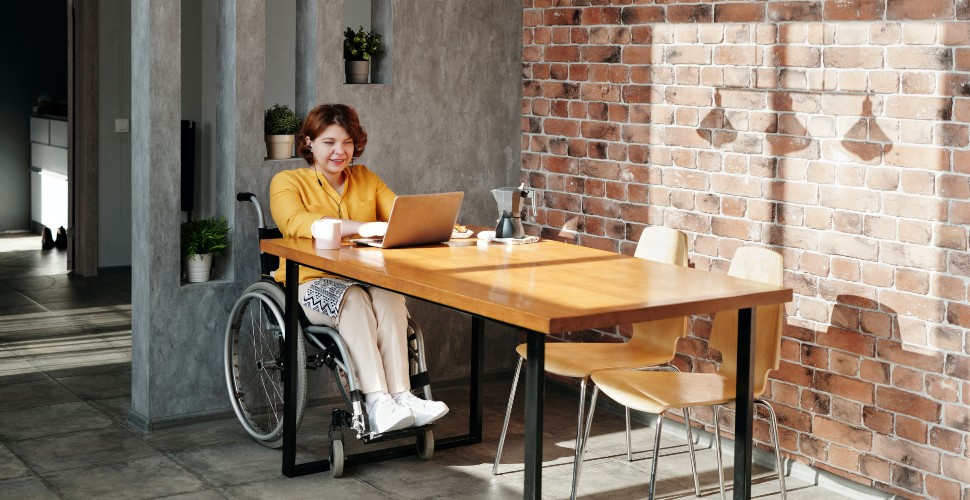Navigating hybrid work: Redefining traditional work patterns for success in the changing talent landscape



In this era of unprecedented change, traditional work patterns are being redefined. Hybrid work models have emerged as one of the most important factors that motivate talent when it comes to choosing the workplace of their choice.
Some 76% of people in the Asia-Pacific region said hybrid working is the most important aspect of flexibility, of which 83% of people surveyed in Australia felt the same way, according to our Talent Trends 2023 ‘The Invisible Revolution’ Report..
The shift toward hybrid work environments marks a shift in how people perceive their professional lives. Workplaces are transitioning from solely focusing on physical presence to prioritising individual well-being and human connections.
The global pandemic has acted as a catalyst for adopting hybrid working. While some employees still desire to work from the office, forward-thinking business leaders are implementing substantial changes to support hybrid work arrangements while preserving their company culture.
Hybrid working models enable individuals to work from home for a portion of the week while reserving the option to return to the office when necessary. This arrangement became an integral part of the lives of millions of people.
While some individuals still prefer to work in the office, many employees are now embracing the concept of hybrid working. This work model accommodates in-person and remote work, allowing for greater flexibility and a more balanced approach to work-life integration.
Related: Workplace flexibility a top priority for candidates: report

Hybrid working offers numerous advantages for both employers and employees. Unlike the traditional on-site work model, hybrid work allows employees to manage their working hours more flexibly and work remotely.
Here are some benefits that employees experience from hybrid work:
1. Improved work-life balance: Employees with hybrid work schedules and locations have greater flexibility, making it easier to balance personal and professional commitments.
2. Efficiency and autonomy are improved: Employees in hybrid work arrangements report more efficient time use. They can structure their workdays according to their productivity patterns.
3. Burnout mitigation: Hybrid work allows employees to take breaks when needed and manage their energy levels more effectively.
4. Higher productivity: A hybrid work environment means employees can focus on individual tasks without distractions while collaborating and building relationships at the same time.
5. Reduced commuting and travel expenses: Hybrid work reduces daily commuting, resulting in significant savings on transportation costs, including fuel, parking fees, and public transportation.
Explore current opportunities by browsing our work from home or hybrid job listings on the Michael Page job portal.
Related: How to create a great employee experience – in the office or at home
Implementing a hybrid work model can yield substantial cost savings for organisations. With less dependency on extensive office spaces, businesses can significantly reduce their real estate investments.
Besides moving to smaller office spaces, some organisations have redesigned their office space with lesser tables and created more collaborative spaces where employees can come together for various discussions.
This shift in office space requirements enables companies to redirect funds toward cutting-edge technologies that support flexible working hours.
On the other hand, employees save on commuting costs and have more time to work and rest.

As the business landscape evolves, companies are embracing the hybrid work model as a strategic advantage over their competitors by leveraging the following factors to reach a wider group of candidates:
Overcoming geographical limitations: Providing hybrid work options allows organisations to attract applicants from faraway states or rural areas, expanding the talent pool beyond the immediate vicinity of their physical location.
Increased diversity and inclusion: Incorporating hybrid work arrangements creates opportunities for individuals facing barriers to traditional office-based employment, resulting in a more diverse and inclusive workforce.
Enhanced candidate attraction: Work-life balance and flexibility are critical for candidates. Hybrid work arrangements allow candidates to achieve this balance, making the organisation more appealing to them.
Improved retention and productivity: Flexible work schedules are significant productivity drivers on-site and off-site. Workers with flexible schedules report higher productivity and focus. Organisations can positively impact retention rates and productivity by offering hybrid work arrangements.
Strategic advantage in hiring: Competition for top talent is fierce, so organisations that offer flexibility and autonomy are more likely to attract and retain them. Companies can be more competitive in the talent market by adopting hybrid work arrangements.
Related: How HR needs to evolve to support the future of work
Hybrid work is more than just a change in the physical location of work. It represents a shift toward secure, intuitive, and immersive work experiences that transcend boundaries.
Automation and AI tools and technologies facilitate more productive work experiences for remote teams, empowering them to interact seamlessly from anywhere in the world.
To fully realise the potential of the hybrid work model, organisations must ensure secure and seamless access to apps and tools, fostering a culture that embraces this new way of working.

Employee engagement is paramount for any company’s success, and the hybrid working model presents an opportunity to sustain productivity and well-being.
There are several strategies you can implement to boost employee engagement when you have both on-site and hybrid-working employees. Here are some steps you can take:
Provide specialised support to managers: Managers play a crucial role in fostering employee engagement, so it’s essential to support them with technical onboarding and training. This support will enable them to effectively navigate the challenges of managing a hybrid team while addressing their team’s social and emotional needs too.
Foster emotional connection and team bonding: When proximity is lost in the office, finding ways to foster team bonds and emotional connection is essential. Build trust and support within a team by encouraging shared commitments and mutual expectations.
Facilitate frequent check-ins: In a hybrid setup, managers should create spaces for team members to share and connect. Encourage staff members to provide life updates, share experiences, and share their thoughts and concerns through regular check-ins during staff meetings.
Encourage in-person interactions: Provide virtual engagement and collaboration with technology tools. Use video conferencing platforms for meetings, presentations, and team discussions. Enhance virtual collaboration by using chat platforms, collaborative document editing, and project management tools.
Leverage technology for virtual engagement: Using video conferencing tools for meetings, presentations, and team discussions. Using chat platforms, collaborative document editing, and project management tools to enhance virtual collaboration.
Recognise and appreciate achievements: Recognising and appreciating both on-site and hybrid-working employees is crucial to engagement. In order to reinforce a positive work culture, recognise individuals in public through virtual shoutouts, newsletters, or company announcements.

Implementing hybrid work in an organisation also brings various challenges that need to be addressed for a smooth transition and effective operation. Here are some potential challenges of implementing hybrid work:
Communication: When working in a hybrid environment, clear communication can be challenging, leading to misunderstandings, reduced collaboration, and diminished productivity. Communication channels need to be established, and team members should be encouraged to communicate.
Coordination: In a hybrid team, coordinating tasks and projects can be challenging. It is important for companies to use project management tools, establish transparent workflows, and define roles and responsibilities to improve coordination and productivity.
Connection: Building and maintaining a sense of connection and belonging among hybrid teams can be complex. Remote employees may feel isolated or disconnected from the company culture and their colleagues. Organisations should prioritise team-building activities, promote virtual social interactions, and create opportunities for informal conversations to foster connection and maintain team cohesion.
Creativity: Creative brainstorming and spontaneous interactions that often lead to new ideas may be challenging in a hybrid workplace. To foster creativity within hybrid teams, organisations must explore virtual collaboration tools, set aside time for creative activities, and share knowledge.
Culture: Maintaining a consistent organisational culture in a hybrid work environment can be challenging. When team members work remotely or have varying schedules, it can be tough to establish and reinforce the desired culture and values. Companies should define and communicate their culture clearly, encourage inclusive practices, and ensure that the company’s values are consistently communicated across all work settings.
Organisations should use a checklist to assess their progress in addressing the above five points. This will help leaders identify areas that require improvement and guide them in implementing strategies tailored to their organisation’s needs.
It is important to note that the challenges of implementing hybrid work may vary depending on the specific context, industry, and organisational culture. Therefore, organisations should proactively identify and address their unique challenges to successfully transition to a hybrid work model.
As we embrace the future of work, it becomes evident that the hybrid work model reshapes traditional notions of employment. Companies must embrace this evolution, integrating it into their culture and leveraging its advantages.
The office is no longer the sole hub of productivity; it is now a dynamic space that harmonises the unique contributions of on-site and remote workers. By harnessing the power of hybrid work, organisations can unlock the full potential of their on-site and remote workforce to act, driving innovation and success in the future.
Start a hiring conversation with Michael Page to find out how you, too, can reap the many benefits of a leading global recruitment agency.
Read more:
Do you have to be likeable to be a leader?
Top social media recruitment strategies for 2023
5 interview questions to ask to tell a great candidate from a good one
If you are an employer and would like to discuss your hiring needs, fill in the form below and we will call you back.
